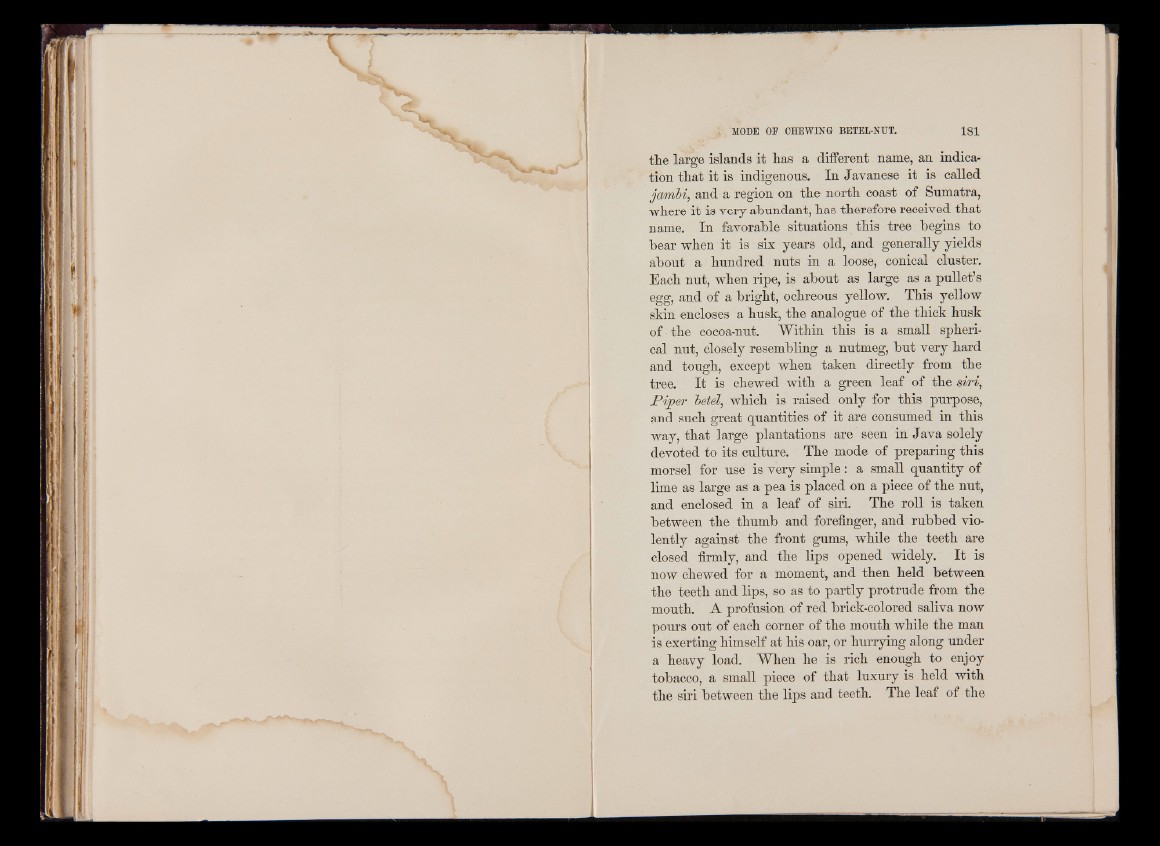
the large islands it has a different name, an indication
that it is indigenous. In Javanese it is called
iambi, and a region on the- north coast of Sumatra,
where it is very abundant, has therefore received that
name. In favorable situations this tree begins to
bear when it is six years old, and generally yields
about a hundred nuts in a loose, conical cluster.
Each nut, when ripe, is about as large as a pullet’s
egg, and of a bright, ochreous yellow. This yellow
shin encloses a hush, the analogue of the thick husk
of the cocoa-nut. Within this is a small spherical
nut, closely resembling a nutmeg, but very hard
and tough, except when taken directly from the
tree. It is chewed with a green leaf of the siri,
Piper betel, which is raised only for this purpose,
and such great quantities of it are consumed in this
way, that large plantations are seen in Java solely
devoted to its culture. The mode of preparing this
morsel for use is very simple: a small quantity of
lime as large as a pea is placed on a piece of the nut,
and enclosed in a leaf of siri. The roll is taken
between the thumb and forefinger, and rubbed violently
against the front gums, while the teeth are
closed firmly, and the lips opened widely. It is
now chewed for a moment, and then held between
the teeth and lips, so as to partly protrude from the
mouth. A profusion of red brick-colored saliva now
pours out of each corner of the mouth while the man
is exerting himself at his oar, or hurrying along under
a heavy load. When he is rich enough to enjoy
tobacco, a small piece of that luxury is held with
the siri between the lips and teeth. The leaf of the